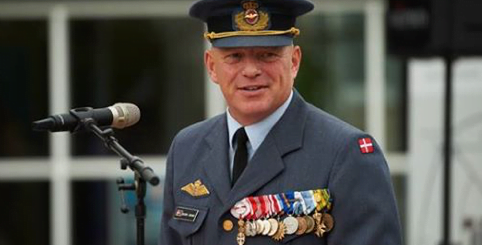The liberal democracies are facing a significant strategic shift from a primary focus on the counter-terrorism and land wars in the Middle East focus to one involving peer competitors and the threat of force-on-force direct defense challenges.
And this is unfolding in a post-post Cold War world in which the classic Cold War threats are being subsumed into a new pattern of tools for conflict in addition to more classic means of combat.
The significant challenge of managing crises in the so-called gray zones between war and peace, as well as dealing with a variety of tools such as information war and cyber conflict muddies the waters in terms of when and where is a crisis and how best to respond.
This new situation has led to greater cooperation among the Nordics in dealing with the Russian challenge to Northern Europe and the return of direct defense as a core challenge. And in reshaping forces to deal with the new strategic situation, a key challenge is to establish 21stcentury national C2 systems which can allow for both better national defense integrated with coalition partners and shaping deterrence in depth in the region.
During my trip to Norway earlier this year, I had a chance to discuss the new focus on coalition oriented but national C2 systems which are in the process of being created there.
In my interview with Brigadier General Jan Ove Rygg, Chief of the Norwegian Air Operations Centre, the need to craft a 21stcentury C2 system was highlighted.
And during my visit to Denmark in October 2018, I had a chance to meet with Brigadier General Karsten Jensen who is currently working on the significant shift in C2 being worked in response to the new Danish Defence Agreement.
The Agreement allows for a significant increase in defense spending and the acquisition of new combat systems, but what BG Jensen is working on is a key aspect of change, namely shifting the primary focus of the C2 from expeditionary operations to national direct defense priorities.
As he put it: “We did not have the appropriate headquarters to effectively run national forces because we based our planning on the assumption that an alliance or a coalition headquarters would command those forces when engaged in an expeditionary coalition operation.”
In other words, the shift as one from providing expeditionary force packages for NATO commanders to providing force packages for national defense within a NATO context.
Given his background, he is certainly a key person to be working the challenge.
His most recent posting was in Norfolk, Virginia at the NATO Transformation Command where he worked with NATO Defence Planning and hence the strategic shift back to deterrence and collective defence.
Now he is in charge of the National Air Operations Centre within the Royal Danish Air Force,
According to BG Jensens: “The new Defence Agreement set the conditions for the Chief of Defence to rebuild the defense structure to again have a coherent national c2 structure.
“Currently, we don’t have one command post, which commands all Air Force capabilities or assets or units.
“This now being set up as the National Air Operations Centre.”
The Danish Armed Forces are now fast tracking their C2 shift and are working to stand up the new structure early next year.
What this means in terms of the organizational approach is a significant change for the Joint HQ operational level. With a major focus on expeditionary operations over the past few years, the Joint HQ focused on significant tactical operational requirements and taskings for those operations.
This meant that they were less focused on a higher or more strategic effort to focus on direct defense and how to work the gray areas, which are now emerging as key challenges to Denmark, the Nordics and NATO as a whole.
Under the new Defence Agreement, the services are being tasked to set up operations centers to manage the tactical operations, which will then allow the Joint HQ focus on the tasks and challenges towards which those tactical capabilities might be directed. Or put in other terms, deterrence is in the mind of the aggressor; how might forces best be put up to enhance deterrence in a crisis setting?
As BG Jensens put it: “Our defense command will move up the strategic food chain.
‘We need to leave the tactical space for the Operations Centers and allow the defense command to provide strategic overhead for the country in thinking through concepts of operations which best create the conditions for credible deterrence.”
This is not simply a task of flying to a challenge; but it is determining how force can best be used in a national perspective, and one which can reinforce or trigger more effective coalition responses.
In other words, shaping 21stcentury deterrence is clearly a work in progress; and it is important to have the Joint HQ focused on thinking through how best to do this, rather than being primarily preoccupied with tactical force implementation tasks.
BG Jensens is in charge of the Air Force side of working the new approach to tactical force implementation and supporting the shift in focus for the Joint HQ.
In short, the new approach is focused on creating force synergy for the Danish forces but within a broader coalition context.
It is about providing for “strategic overhead” for the nation in the evolving strategic context of providing for direct defense capabilities.
Without C2, without an ability to make strategic choices, it would simply be about tactical operations without the kind of strategic context which is clearly required in the new European situation.


